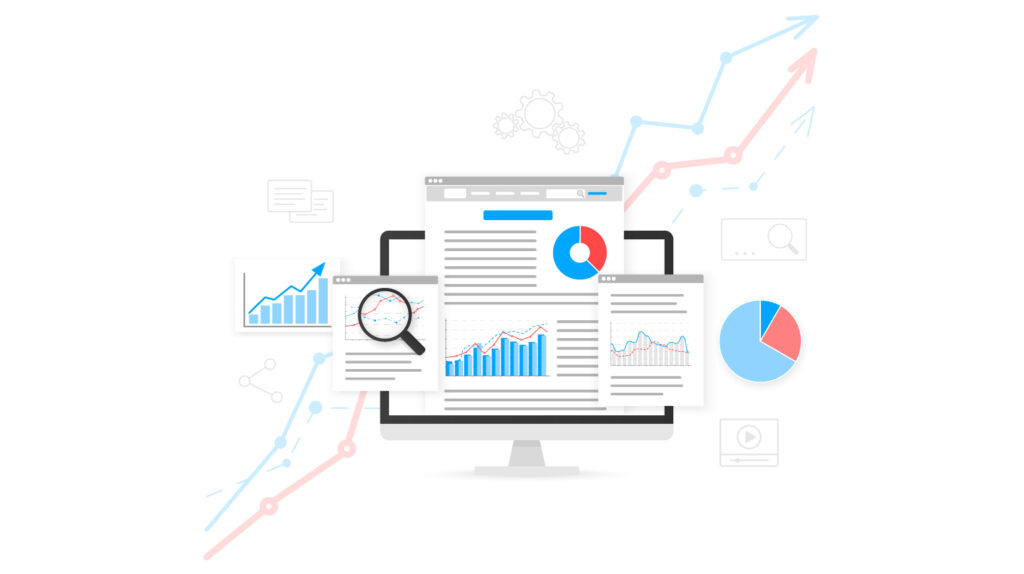The speed of your website has a direct impact on conversion rates and SEO. If you don’t take time out to make improvements, it can turn out to be a costly mistake. Remember, if your site is slow, you are losing business. Google has also supported this fact by stating, “Speed equals revenue.”
Suppose you are wondering why then the answer is that users are more likely to bounce from slow websites. In addition, this probability increases by over 100% if the page load time exceeds 6 seconds.
Speed is crucial for a website, and to test your page load time, Google’s PageSpeed Insights tool is a perfect resource to assist you in finding and fixing all issues causing your site to perform poorly.
What is Google PageSpeed Insights?
If you are a newbie in digital marketing, you’re probably wondering what PageSpeed Insights is. To be precise, it is a free tool that analyzes the performance of a webpage on both mobile and desktop. It also provides users with insights on how to increase page speed scores.

PageSpeed insights Google tool will access your website’s performance metrics and give you a score between 1 and 100 to summarize its overall performance. If you see a score of 90 or above, that means your site is performing up to the mark. On the other hand, a Google speed score of anywhere between 50 and 90 means that improvements are needed. A score below 50 is considered poor.
What Causes Google Speed Score to Drop?
When it comes to WordPress development, speed is a crucial element that needs to be worked on. A slow website can prove to be a disaster for your business. Having that said, here are a few factors that contribute to making your Google speed score poor:
- Too many advertisements
- Unoptimized images
- Utilizing an outdated CMS
- Incorrect JavaScript implementation
- Excessive HTTP requests
- High dependency on Flash content
- Too much traffic
Why Does Page Speed Matter?
The Core Web Vitals update was announced in mid-2021. This update strongly focuses on speed as a key ranking factor. It also takes the following factors into consideration:
- Cumulative Layout Shift (CLS)
- First Input Delay (FID)
- Speed Index (SI)
- LCP (Largest Contentful Paint)
- Time to Interactive (TTI)
- First Contentful Paint (FDP)
- TBT stands for Total Blocking Time.
This update has highlighted that page speed has become an even more vital factor in SEO. Google wants website owners to provide a better user experience; fast websites are one way to make this possible. If your website is quick, you’ll have better chances of seeing your pages ranked at the top. At the same time, slow sites will witness a drastic drop in rankings and traffic. To further improve your rankings on search engines, consider using a link-building service and increase your visibility.
How To Increase Page Speed Score?
Now that you know more about Google PageSpeed Insights, it’s time to test your site and learn how to increase your page speed score. Here is a list of the best practices to boost your score in no time.

1. Optimize your Images
Too many images and poorly optimized images are the most significant reasons pages take more time to load. Images take up more space, and they could slow down your website and eventually increase your bounce rate. High-quality images aren’t bad all the time. But that doesn’t mean that you should use the highest resolution. In fact, if you want to optimize your images to reduce load time without hurting the quality, you need to compress your images.
There are many tools online available that can help you to compress images in no time. Also, if you are running a WordPress site, you can use plugins like WP Smush that will automatically detect images that can be compressed. Also, you should avoid using PNG format and convert images to the WebP format. WebP is currently the recommended image format for all websites by Google.
2. Integrate AMP
Accelerated Mobile Pages (AMP) is an open-source HTML framework that optimizes mobile web browsing. It removes unnecessary content so that your web pages can load faster on mobile devices.
While using the internet on your phone, AMP-version websites open in a simplified manner so that you browse through pages like you are using an app.
3. Minify CSS, HTML, JavaScript
Minification is the process of removing or fixing unwanted or duplicated data without affecting how a browser processes HTML. It also involves removing unnecessary duplications, characters, and spaces in the HTML file.
By minifying CSS, HTML, and JavaScript, you’ll witness a reduction in the size of these files. Also, the page load speed will improve as the files become smaller. This process can be automated for WordPress users by installing plugins like HTML Minify and WP Rocket.
4. Avoid Post-Click Landing Page Redirects
A post-click landing page redirect is a process in which a user is sent from one page to another. This happens when a user clicks an ad or link or while submitting a form. Redirects can be very frustrating for users and slow down your website.
That is why it is advised to avoid them as much as possible. Each time a user has to be redirected, page loading comes to a halt, adding seconds to your page’s load time. Even Google recommends avoiding redirects. Here are some common redirect patterns;
- example.com uses responsive web design, and no redirects are needed – fast and optimal!
- example.com → m.example.com/home – multi-roundtrip penalty for mobile users.
- example.com → www.example.com → m.example.com – prolonged mobile experience.
5. Use a Content Delivery Network (CDN)
Be sure to upload the correct size image. Otherwise, you will definitely run into speed issues. WordPress handles this automatically by creating multiple versions of the image at the upload time. However, if you use a different CMS, you may need to resize the image manually.
With a CDN, the server load is basically distributed across different locations, and the assets are served from the location closest to the user. The closer the data, the faster the loading time.
6. Prioritize above-the-fold Content
Above the fold content is content that is displayed on the user’s screen without scrolling down. This content should be loaded as soon as possible so that the user does not have to wait long for it to appear on the screen.
Remember, whether you need to see your most important content first or have a carousel that needs to rotate quickly, make your most important content available as soon as possible.
This also attracts users as the first fold will set the first impression you put on them. They’ll know right away what you are offering without getting distracted by anything else.
7. Choose a Lightweight Theme (For WordPress Users)
If you own a WordPress site, your theme will play a significant role in helping you get a good Google PageSpeed score. Not all WP themes are good. As different developers design all the themes, you can’t trust them all. In order to find the right one, you’ll have to go through reviews and even test a few of them by either going for free trials or free versions. Once you find a theme that maintains the speed of your site, you can purchase the premium versions.
Also, you must ensure you only keep the plugins you need. If there are plugins pre-installed in a theme, uninstall them right away. WordPress Plugins can also impact the load time if they start malfunctioning. If an update is shown, immediately update the plugin to avoid any errors in the performance of your website.
Consider Taking Professional Help

If you have a budget and are short on time, you can always take professional help from an agency that can provide you with dedicated service in solving your speed issues. WPExpert’s WordPress speed and performance optimization services are ideal for solving your problem. With the help of innovative techniques, you can experience a website faster than ever. You’ll get the following services from the agency once you hire them;
- WordPress site optimization
- Performance optimization
- Security optimization
- Minification of HTML, CSS, and Javascript
- Implementation of CDN
- Content optimization for the first fold
- Enable GZIP compression
And much more.
If you aren’t ready to work on your site on your own, go for this power-packed all-in-one speed optimization service to increase your Google PageSpeed Insight score in no time.
Wrap Up
By following all the tips mentioned in this blog, you can improve your Google PageSpeed Insights score and witness your keywords get ranked higher on Google. Also, as you’ll be offering a better user experience, you’ll also see a drop in bounce rate and a rise in traffic.
Remember to analyze WordPress site optimization performance every once in a while and make the necessary changes. This will ensure that your website runs smoothly and your SEO practices aren’t wasted. A fast website with reliable performance has a greater chance of converting more users. Analyzing your website lets you know which areas to focus on to improve the user experience regardless of your visitors’ devices.